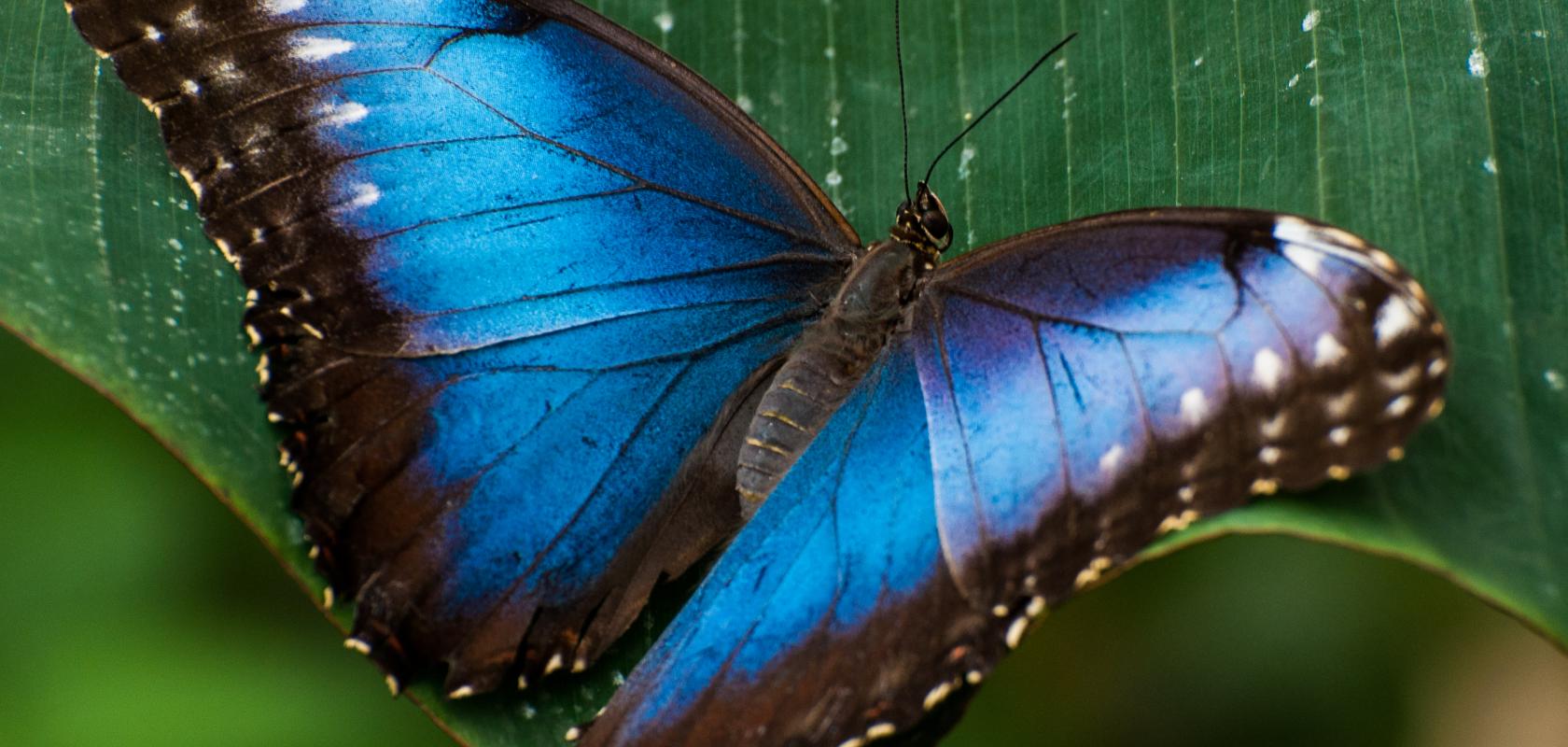Scientists have recreated a complex structure, previously found only in nature, that could unlock new ways for manipulating and controlling light.
The structure, which can be found in the wing scales of some species of butterfly, can function as a photonic crystal, according to a new study by researchers at the University of Birmingham. It can be used to control light in the visible range of the spectrum, for applications in lasers, sensors and solar panels.
The new study, published in Advanced Materials, demonstrates that the naturally occurring complex gyroid structure can be self-assembled from colloidal particles hundreds of nanometres in size.
Gyroids are typically curved surfaces that divide space into two interwoven channels. Each of these channels can have a network representation of linked vertices with three-fold connectivity and corkscrews through space in a particular direction, right or left. This twist makes each network chiral – like left and right hands, their mirror images cannot be superimposed on each other. While this chirality imparts additional optical properties to a photonic crystal, it is lost when the two networks of opposite-handedness are together in the form of the double gyroid structure. This can occur in certain synthetic systems.
In their latest work, the researchers first present a single-network gyroid structure built from colloidal spheres as a target for self-assembly – nature’s way of building architectures – before establishing the design principles for fabricating this chiral crystalline structure in computer simulations.
"This is a new and exciting way to fabricate nanophotonic media with exceptional and tailored chiro-optical properties, with immense control over their properties,” said Dr Angela Demetriadou, a co-author on the Advanced Materials paper.
So far research on self-assembling colloidal photonic crystals has been mostly on diamond-structures, according to the Birmingham scientists. Self-assembly of colloidal diamond presents a number of challenges, however, including the requirement of selecting the cubic form over its hexagonal counterpart for their practical applications as photonic crystals in optical devices.
The new approach instead involves ‘patchy spheres’, which have a designer decorated surface to encode the information of the target structure – the single colloidal gyroid. The decorated parts of the surface are sticky to bring the particles together to form the network structure. In addition, the work shows that the single colloidal gyroid also has intriguing optical properties by virtue of its chirality, which is lacking in a diamond structure.
“To the best of our knowledge, this is the first report of direct self-assembly of single colloidal gyroid structures from designer building blocks,” said Dr Dwaipayan Chakrabarti, the corresponding author on the paper from the University of Birmingham’s School of Chemistry. “We hope that our novel approach will stimulate further investigations in the field of colloidal self-assembly, especially experimental efforts to build on this exciting development.”
This excitement is echoed by Professor Stefano Sacanna of New York University, a world-leading expert in the synthesis of colloids and self-assembly of new materials: “With their work, Chakrabarti and co-workers bring an exciting new target to the attention of the colloidal self-assembly community. Using just spheres with a clever patchy design, their bottom-up routes to colloidal gyroid structures pave the way for a new generation of experimentally achievable photonic crystals.“


